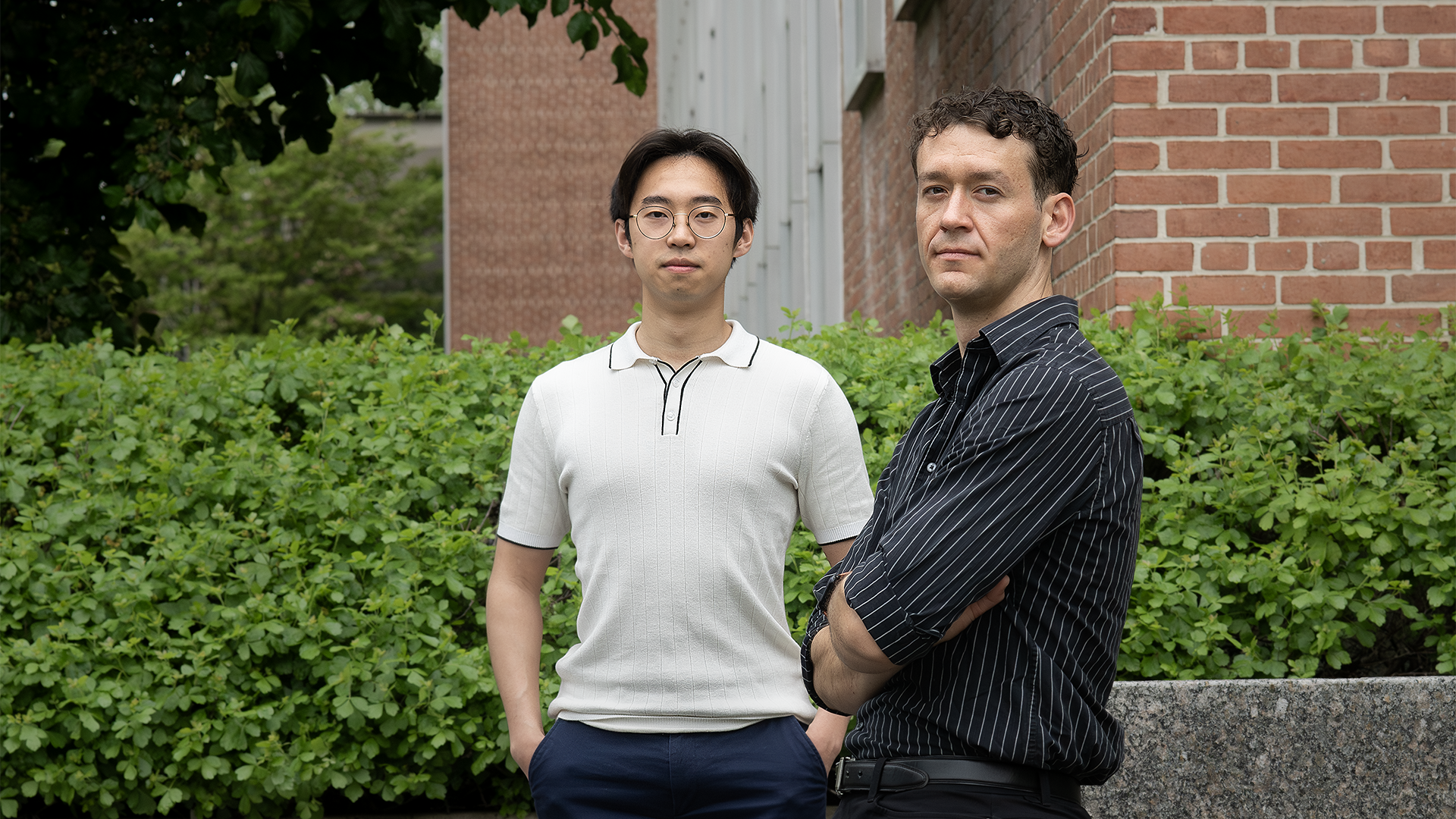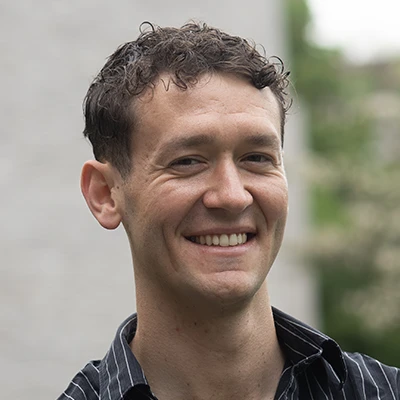
2025 Maeder Fellows tackle grid planning under deep uncertainty and energy-efficient power delivery
In support of its mission to train the next generation of energy leaders, the Andlinger Center has selected two graduate students — Gabe Mantegna and Shukai Wang — as Maeder Graduate Fellows for the 2025-2026 academic year.
Mantegna will work to support long-term energy planning for electric utilities, and Wang will develop energy-efficient power delivery systems to keep pace with the explosion of artificial intelligence.
The Maeder Graduate Fellowship is awarded to one or two graduate students each year who demonstrate strong potential to develop solutions for a sustainable energy and environmental future. The fellowship is supported by the Paul A. Maeder ’75 Fund for Innovation in Energy and the Environment and will cover the students’ tuition and stipend for the 2025–2026 academic year.
Gabe Mantegna: Grid planning under deep uncertainty
When it comes to energy system planning, utilities and operators navigate deep unknowns around the availability and cost of future energy technologies. There are also open questions around how factors such as climate change or the expansion of data centers could change the way the world consumes energy.

Gabe Mantegna, a graduate student in mechanical and aerospace engineering, is developing robust optimization models to help utilities and policymakers make energy planning decisions in the presence of so many uncertainties. Advised by Jesse Jenkins, an associate professor of mechanical and aerospace engineering and the Andlinger Center for Energy and the Environment, he is also employing those robust optimization approaches alongside tools like machine learning to rethink the way that utilities traditionally engage in reliability planning.
Mantegna, who spent several years at a biofuels startup and an energy consulting firm before beginning his Ph.D., said he appreciates the opportunities he has had in Jenkins’ ZERO Lab to partner with industry on real-world problems. As part of his project on deep uncertainty, for example, Mantegna is working directly with energy planners in California to develop his methods, present his findings, and ensure his work is practical for real-world applications.
“What is really unique about the ZERO Lab is how much we’re able to partner with industry to solve the problems that exist in the real world,” said Mantegna. “We’re able to combine different perspectives — policy, regulatory, and engineering — to do some incredibly innovative and important work.”
In addition to his research, Mantegna co-founded and is the CEO of Resilient Transition, a startup company that seeks to transfer the novel energy planning methods being developed in academia into usable solutions for utilities. He is also the president of the Macro-Energy Systems Society, which serves as a unifying force for energy systems researchers across universities to collaborate on energy challenges.
“There is a critical gap between the people in academia who are coming up with these novel methods for grid planning and the people actually on the utility planning side,” Mantegna said. “We’re really trying to develop a toolkit that can help transfer these innovations out of academia and into industry.”
While Mantegna enjoys being a part of the ZERO Lab and macro-energy systems communities, he also said that being a member of the Andlinger Center community has given him a unique opportunity to interact with researchers across a wide range of fields — often outside of his domain of expertise.
“One day I could be talking to someone working on building ventilation technologies, and the next day I could be talking to someone developing new battery chemistries,” Mantegna said. “It’s nice that the Andlinger Center can serve as a hub for all of these wildly different topics.”
Shukai Wang: Energy-efficient power delivery for data centers
As the rise of artificial intelligence drives a surge in energy-intensive data centers, delivering electricity efficiently from the grid to the computing chips at the heart of those data centers has never been more important.

Shukai Wang, a graduate student in electrical and computer engineering, is working to make critical components of those power delivery systems more energy efficient. In collaboration with his adviser Minjie Chen, an associate professor of electrical and computer engineering and the Andlinger Center for Energy and the Environment, Wang has focused much of his graduate career on developing better tools for modeling power magnetics.
“Magnetics are a part of every single power delivery system,” said Wang. “At the same time, they take up a lot of physical space within the overall power conversion unit, and they are a major contributor to the energy losses that happen during the conversion process.”
While improvements to other components of power delivery systems have yielded higher efficiencies and smaller sizes, making improvements to magnetics has often been challenging. For example, the Steinmetz equation, which is used to estimate power losses in magnetic materials, was developed over 100 years ago for devices operating in vastly different conditions from today.
For his project, Wang has assembled a database of over a million data points about the characteristics of today’s power magnetic materials. Using machine learning tools, he has developed models from that database to predict the characteristics and effectiveness of power magnetics under different operating conditions.
A major priority of Wang’s work is ensuring his research is open-source and available as a resource for other researchers from academia and industry.
“Our code is open source. Our database is open source,” Wang said. “We really want the entire international community to join us, so that we can work together to expedite the push for better power magnetics models.”
In a similarly collaborative spirit, Wang is a member of the organizing committee for the IEEE PELS-Google-Enphase-Princeton MagNet Challenge, an international power magnetics modeling competition that brings together researchers from a wide range of disciplines to develop better software for predicting magnetic characteristics.
Now in its second iteration, the competition is challenging 40 research teams to model the characteristics of power magnetics materials under transient conditions, such as those that occur when power is quickly switched on or off to a device. Wang said understanding how magnetics perform in these circumstances is critical for building more efficient power delivery systems, as nearly all circuit design models are built to simulate transient conditions.
“If we can develop a better model for magnetic materials, then it would be a huge step forward for magnetics designers,” said Wang. “We could potentially reduce the everyday computer chargers size by 30 to 40%.”
Wang said the Maeder Graduate Fellowship will allow him to continue making connections in the research community, with the goal of having his research used as much as possible by power electronics engineers.
“It’s important to me that my research can be applied to real-world problems. That’s really what motivates me most about the work I’m doing at the Andlinger Center and Princeton,” Wang said.